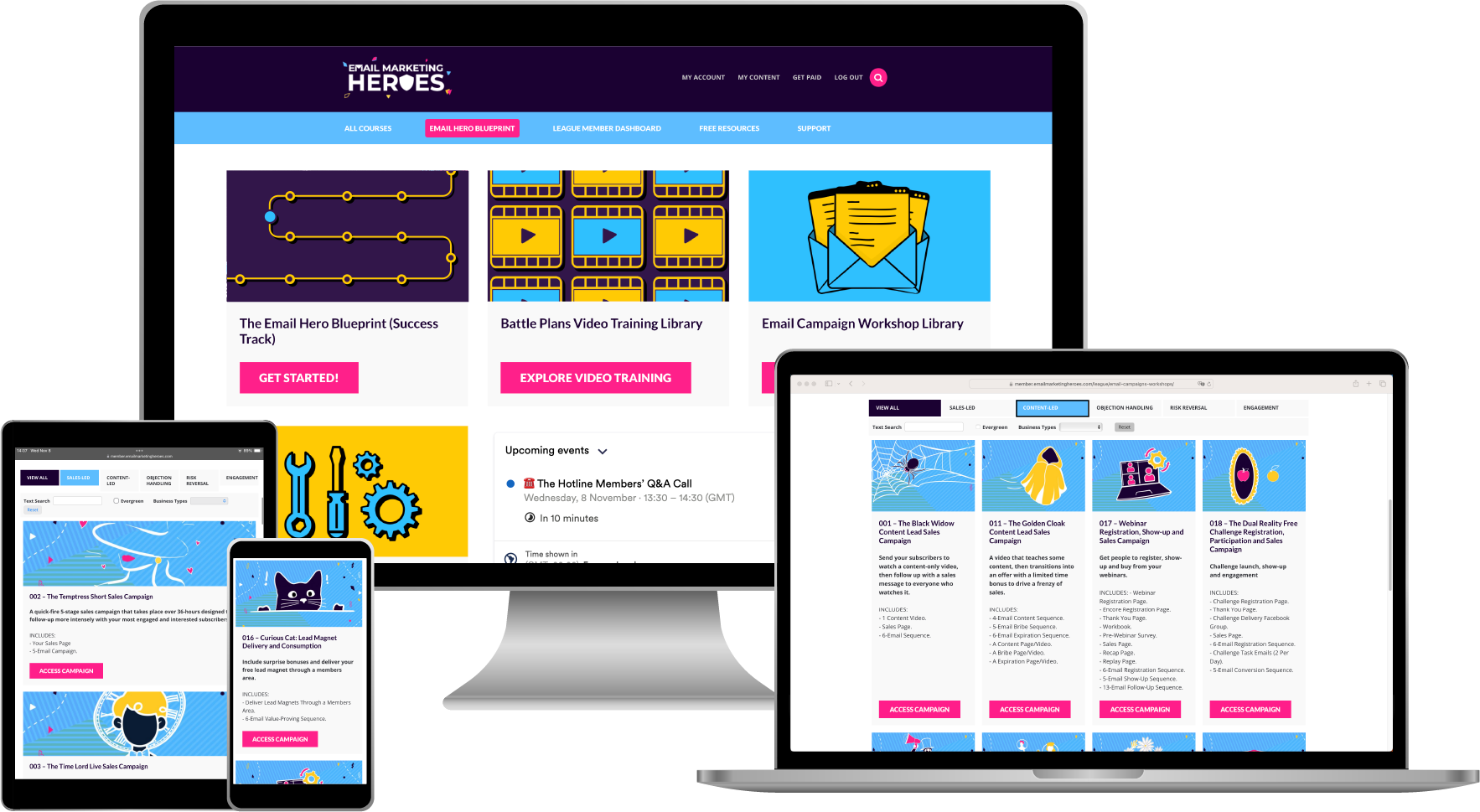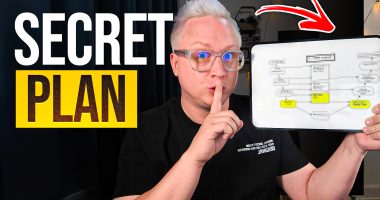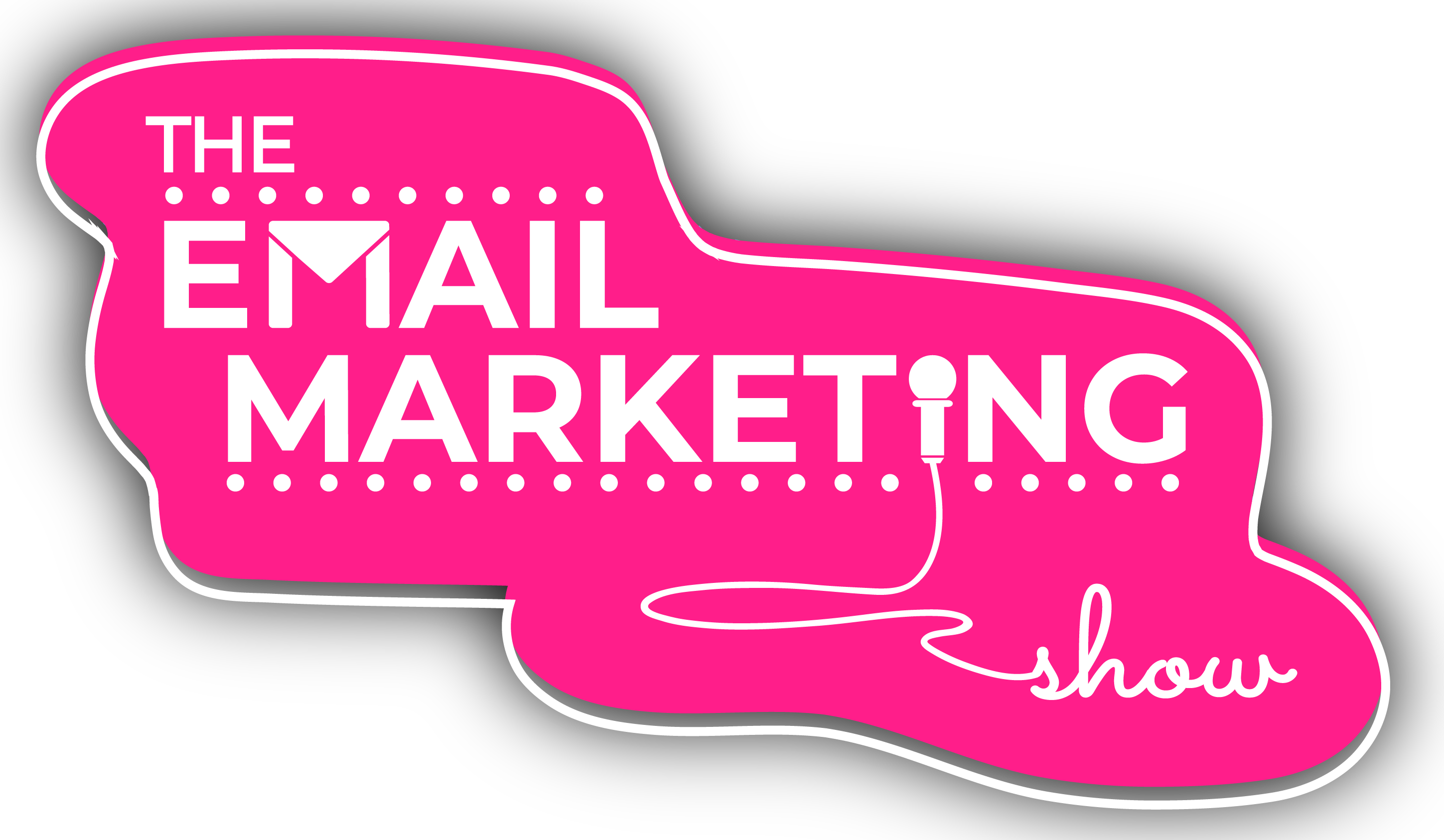
What The Heck Are Cross-Selling and Upselling, And How Can You Use Them In Your Email Marketing To Skyrocket Your Sales?
Ever heard the terms cross-selling and upselling and wondered what they have to do with email marketing? Aren't these ‘marketing things' that happen at checkout? Can you even do cross-selling and upselling with email marketing?
Oh yes, you can.
And when you use these strategies in the right way in your business, you'll start making loads more sales.
So let's find out how, shall we?
SOME EPISODE HIGHLIGHTS: (0:11) Want a FREE resource to get more clicks on your emails? Check out Click Tricks. (4:05) What's the difference between cross-selling and upselling? (7:23) How we do cross-selling and upselling in our business. (12:33) Sell fast - turn subscribers into customers. (18:10) Maximise the value of your customers (quickly). (21:32) The biggest mistakes people make with cross-selling and upselling. (27:44) Putting together your cross-sell and upsell offers. (30:47) Create systems to turn customers into repeat customers. (32:46) Subject line of the week.
What's the difference between cross-selling and upselling?
When it comes to the difference between cross-selling and upselling, in our business, we use the terms fairly interchangeably. And that probably upsets a lot of people in the marketing world. So here are some definitions for you:
- Upselling is about selling someone a perceivably larger thing – something more expensive or of higher commitment.
- Cross-selling means selling people other things that are around the same hierarchy as what they already bought (or maybe even lower value). And this can also mean different offers of the same product.
For example, you could sell a full-price membership but also a lower-rung type product for people who don't want to pay the full price. They pay less but also get less content or value. Fair, right?
How we do cross-selling and upselling in our business
So let’s talk about what cross-selling and upselling look like in our business. When people come into our world, we want to sell them our core product, which is our membership The League. We then upsell our members one of two things.
- The first product is our Accelerator programme, which is a higher-ticket, a cohort-driven programme with limited capacity we run live a few times a year.
- The second product is our Agency – limited capacity and much higher ticket price.
But in all honesty, terminology doesn’t matter that much to us. It’s more about maximising how much someone is able to spend with you. So if people are in a transaction, you want to encourage them to upgrade their order and spend more money with you than they’d originally anticipated (in a totally ethical way, of course). That’s an upsell. But if the transaction is complete, and you’re offering this customer other products over time, that’s cross-selling territory.
What we think makes a difference is that we built a business that's sustainably profitable and manageable where we don't have to create new products all the time. We have a good ecosystem whereby people join our email list (either free or paid) and go through a sequence of emails that maximise their ability to buy something. And then we upsell them to increase their customer value. That’s why we haven’t created anything new (other than for the fun of it) for ages – we don’t need to. What we have is sustainable.
So if you're going to engage in activities such as teaching or speaking (we do because we love it), make sure you do it in such a way that enables you to sell more of what you already offer.
The practicalities of cross-selling and upselling
Sell fast – turn subscribers into customers
The first thing we recommend is that you never hold off going live with your product or service because you don’t have an upsell or cross-sell offering just yet. If you don't launch, you won't know if you can convert your front-end offer. It's tempting to wait until you've created a bigger funnel, especially if you're losing money on ads. But you're better off spending time tweaking your core offer until you find one that resonates with your audience.
Cross-sell and upsell offers are great for making the economics work, but they’re part of the second phase. The first phase is to ensure you are converting your core offer. Because if you're not, you're wasting your time and money. Even if you're selling your core product at a loss at first, at least you know you can sell it. And then you can add cross-sell and upsell propositions to maximise your return on costs.
In other words, sell fast. That's what we do. When subscribers come into our world, for 60 days, they go through an automated system of emails that will turn them into customers. And then in the following 90 days, they get emails that will maximise their value to our business.
And it's all automated! We don't have to be in the trenches on a daily basis wondering where the next dollar is coming from. We’re out there preaching to get people in the system at the front end. But once the wheels are turning, our automated system is taking care of the rest.
Maximise the value of your customers (quickly)
Something that isn't hugely talked about is that a lot of us business owners end up being out of pocket because of ad spend. Acquiring subscribers has a cost, and it can be hard to get to a point where your core offer fully covers your ad spend. But the good news is that once people are in your world, with the right systems, you can make that money back. And you want to do it quickly!
That's what we're really good at – getting people to buy from us fast and then maximising the value of that customer really quickly. We don't wait around – we want to get people to buy now. Our automated email engine turns subscribers into customers fast so we get our ROI. That's why we have a series of offers designed to get our customers to spend more money with us – we simply can't afford to be out of pocket!
And the good thing is that it happens predictably because our system is automated. We don’t have to remember to run a promotion – our email campaigns go out automatically, even when we’re busy doing something else. We’re confident and happy to go and speak at events to bring people into the front end because we know our back-end system is predictable. Every single person who comes through our front door will go through that same system. There’s no choice – it's a chain of events (we call it a customer engine) that turns your subscribers into customers.
The biggest mistakes people make with cross-selling and upselling
A mistake we often see business owners make is to present a customer with a lot of different offers at checkout, one after the other. As a rule of thumb, if someone says no twice, that's enough. Let them buy the product they want without having a never-ending chain of offers. As a customer, you don’t want to say no to something just to be offered something else and then another thing and another thing!
Something else we recommend you don't do is to make offers that are not related. We're quite strict with our cross-sell and upsell offers – we want them to be tightly related, congruent, and relevant to the main product. So don't go completely off-piste and end up offering something unrelated. It's really not about shoving stuff into your funnel to make it bigger!
Also, make sure you're not one of those people who are so focused on creating new products that you forget to create a system around what you already have. Instead, build an automated email marketing system that you set up once and runs forever (and makes you lots of money).
Once you've done that, coming up with new products is great. But only do it when you have the freedom and bandwidth to do so – not when you don't yet have a team or automation in place. Build a system around your existing offers first and then focus on new products. There's nothing wrong with pivoting if and when your business has changed. But don't do that every few months! Because otherwise you'll hit a ceiling and won't be able to scale your business.

The Top 10 Books To 'Power Up' Your Email Marketing
10 book recommendations that will improve all areas of your email marketing (including some underground treasures that we stumbled upon which have been game-changing for us).
Putting together your cross-sell and upsell offers
We think it’s important to create some sort of congruence with the offers you put together. So for example, let's say your front-end product is a series of videos for $67. You'll need a lot of positioning, marketing, and copywriting to convince people on their checkout journey to spend, say, $97 for an eBook. It’s not impossible because it always depends on how you frame it. But if your core product has more perceived value, the upsell itself will make your core product appear even more valuable.
People often forget that the actual product you sell is part of the marketing – it needs to have perceived value in itself. So when pricing your upsell offers, think about the perceived increased value that it gives to your core product. If your product is $67, your upsell doesn’t have to go incrementally up. We’ve seen successful funnels where the front end might be $300, but the upsell is cheaper at $47. And that converts like crazy because of the price anchoring that’s offered by the front-end product people already bought.
The other thing you can do is to go dramatically higher. So your product might be $67, but your upsell is $1,000, for example. That works too.
Be careful when offering your time as an upsell!
When putting together your upsell offers, we recommend you don't offer your time (such as a coaching call) as an upsell. It’s a really tempting thing to do when creating a funnel if you don't have any other products ready. But offering your time doesn’t always work. In fact, you might find it hurts your conversion because not everyone wants to talk to someone they’ve never met – some people may find that intimidating or like to be left alone!
Create systems to turn customers into repeat customers
Cross-selling and upselling fit in your business in two places. The first place is at checkout, where you want to present your customers with congruent, well-thought-out bump offers. The second place is within your email marketing. That's the place where you use your email engine to turn those customers into repeat customers!
Your job as a business owner is to maximise the value of every customer. So always look at how can scale your business and make it more profitable, rather than only focusing on the front end. When people come into your world, try to sell to them immediately. Use ongoing email automation to maximise that person’s value to your business. Because launching something new all the time isn't sustainable!
Subject line of the week
This week’s subject line is “Ruining your day”. It’s a bit like that subject line you may have seen that says “bad news.” These are similar because they make people want to know what the bad news is. And subject lines like those tend to have a high click-through rate. So check it out!
Useful Episode Resources
Related episodes
How To Create A Member Onboarding Sequence That Your Members Will Love.
Best Email Marketing Campaign To Get Your Customers To Buy Again (And Again)
Super Cool Member Growth Strategies To Attract New Customers With Email Marketing.
FREE list to improve your email marketing
If you want to write better emails, come up with better content, and move your readers to click and buy, here's how. We put together this list of our Top 10 most highly recommended books that will improve all areas of your email marketing (including some underground treasures that we happened upon, which have been game-changing for us). Grab your FREE list here.
Join our FREE Facebook group
If you want to chat about how you can maximise the value of your email list and make more money from every subscriber, we can help! We know your business is different, so come and hang out in our FREE Facebook group, the Email Marketing Show Community for Course Creators and Coaches. We share a lot of training and resources, and you can talk about what you're up to.
Try ResponseSuite for $1
This week's episode is sponsored by ResponseSuite.com, the survey quiz and application form tool that we created specifically for small businesses like you to integrate with your marketing systems to segment your subscribers and make more sales. Try it out for 14 days for just $1.
Join The League Membership
Not sick of us yet? Every day we hang out in our amazing community of Email Marketing Heroes. We share all of our training and campaigns and a whole bunch of other stuff. If you're looking to learn how to use psychology-driven marketing to level up your email campaigns, come and check out The League Membership. It's the number one place to hang out and grow your email marketing. Best news yet? You can apply everything we talk about in this show.
Subscribe and review The Email Marketing Show podcast
Thanks so much for tuning into the podcast! If you enjoyed this episode (all about cross-selling and upselling and how to do it right) and love the show, we'd really appreciate you subscribing and leaving us a review of the show on your favourite podcast player.
Not only does it let us know you're out there listening, but your feedback helps us to keep creating the most useful episodes so more awesome people like you can discover the podcast.
And please do tell us! If you don't spend time on email marketing, what do you really fill your working days with? We'd love to know!






